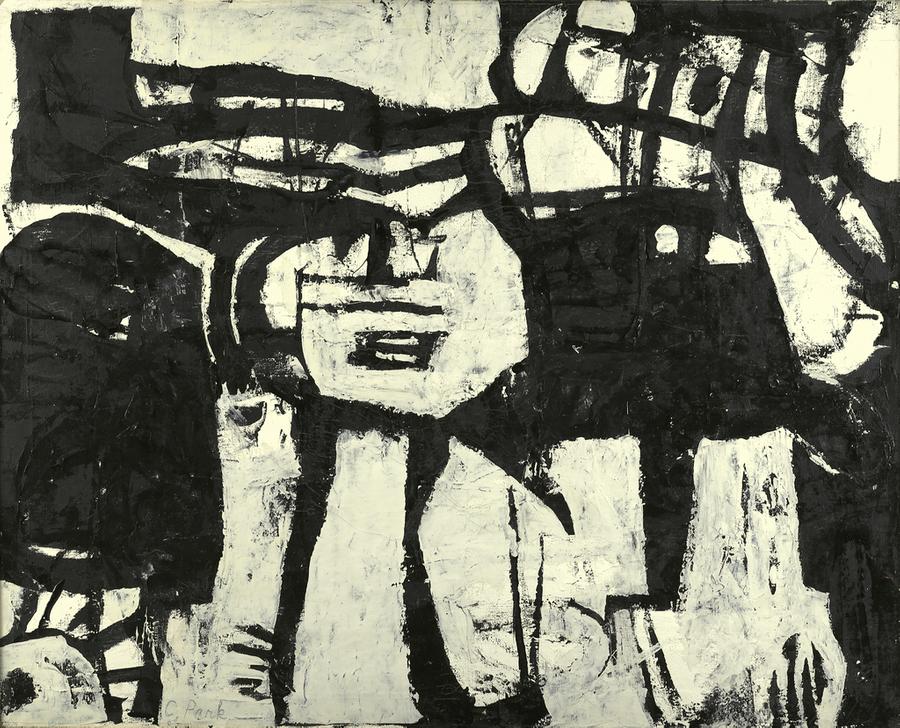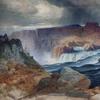Now Representing the Estate of Charlotte Park
- NEW YORK, New York
- /
- May 12, 2015

BERRY CAMPBELL is pleased to announce the exclusive representation of the estate of Charlotte Park (1918–2010), an artist whose important contribution to the Abstract Expressionist movement during its early years has recently been acknowledged. Writing in the New York Times, just before Park died in late 2010, Roberta Smith called Park “a natural painter and a gifted colorist,” whose “ascension into the ranks of widely known Abstract Expressionists” was probably too late for her to witness. Overshadowed by the attention given to the work of her husband, James Brooks, Park kept a low profile over the course of her career, while painting some the strongest and most brilliantly colored canvases of her time. Her art is a strong case against the idea prevalent from the 1950s onward that women were incapable of the muscularity and confidence necessary to be action painters. The representation of Park’s estate adds to Berry Campbell’s leading role as a showcase for the work of established and mid-career artists in the modernist tradition. Other estates and artists represented by the gallery include Edward Avedisian, Walter Darby Bannard, Stanley Boxer, Dan Christensen, Eric Dever, Perle Fine, John Goodyear, Balcomb Greene, Gertrude Greene, Ken Greenleaf, Raymond Hendler, Jodie Manasevit, Jill Nathanson, Stephen Pace, William Perehudoff, Ann Purcell, Syd Solomon, Albert Stadler, Susan Vecsey, James Walsh, and Joyce Weinstein.
500x394.jpg)
Born in Concord, Massachusetts, Park studied from 1935 to 1939 at the Yale School of Fine Art. She met James Brooks while working at the Office of Strategic Services in Washington, D.C. during World War II. The two moved to New York City in 1945, where Park studied privately with the Australian artist Wallace Harrison. Brooks and Park soon became part of the circle of Jackson Pollock and his wife Lee Krasner. They rented a studio space that had been occupied by Pollock and joined Pollock and Krasner, along with other young artists working in new styles, in establishing studios on Long Island. They stayed first in Montauk, but after their studio was destroyed by a hurricane in 1954, they moved to a cottage in Springs, East Hampton, which became their full-time residence.
Park initially worked in a monochrome palette, which liberated her to focus on form. By the mid-1950s, she reintroduced color into her art, evolving a lyrical style, in which suggestions of the natural world appeared to pulsate with organic life. By the middle of the decade, she was producing larger canvases with complex compositions and charged relationships of color. She did not shy away from strong contrasts and bold, forthright shapes. Uniting painting and drawing, she formed a vocabulary featuring clustered loops, black curvilinear forms that both define and liberate, and tensed and sensual anatomical suggestions. Figurative elements seem to taunt and loom in her art, but are either suppressed or diffused. In the late 1950s, Park explored collage, concurrently with her contemporaries Krasner and Conrad Marca-Relli. For these works, she drew passages of color from her earlier paintings, setting them into new contexts. Later in life, Park was drawn to Piet-Mondrian’s neo-plasticism and created open compositions that conveyed permanence and infinity.
In the 1950s, Park exhibited her work broadly, showing at the Stable Gallery and participating in annuals at the Whitney Museum of American Art. Her first solo show was at Tanager Gallery in 1957. In deference to her husband, she withdrew from the art world in the 1960s, only emerging in 1973 when a solo show of her art was held at the Elaine Benson Gallery in Bridgehampton, New York. In the twenty years that followed, she was included in numerous exhibitions on Long Island and in New York City. Shewas also represented in Seventeen Abstract Artists of East Hampton: The Pollock Years, 1946-1956, held in 1979 at the American Cultural Center of the United States Embassy in Paris. In 2003, Park’s art was featured, along with that of Dan Christensen and Allan Wexler in the exhibition, Three East End Artists, held at the Parrish Art Museum, Water Mill, New York. Park’s work is included in the collections of The Corcoran Gallery of Art, Washington, D.C., Guild Hall, East Hampton, New York; The Parrish Museum of Art, Southampton, New York; and the Telfair Museum of Art, Savannah, Georgia.
View More Works by Charlotte Park
Email for Prices and More Information
Contact:
Christine BerryBerry Campbell LLC
212-924-2178
cb@berrycampbell.com
530 W 24 Street
New York, New York
info@berrycampbell.com
212-924-2178
http://www.berrycampbell.com
About Berry Campbell LLC
BERRY CAMPBELL features Post-War Modern and Contemporary art with a focus on established as well as emerging and mid-career contemporary artists, including Edward Avedisian, Walter Darby Bannard, Eric Dever, Ken Greenleaf, Raymond Hendler, Jodie Manasevit, William Perehudoff, and Ann Purcell. BERRY CAMPBELL is a collaboration between Christine Berry and Martha Campbell. Christine Berry began her career at the Modern Art Museum of Fort Worth and then continued onto the Whitney Museum of American Art. Thirteen years ago, she shifted from the non-profit sector to the commercial world. As an art dealer, she worked with some of the world’s foremost public and private collections. Martha Campbell started her career at The Phillips Collection in Washington, DC. She was the director at a major midtown gallery focusing on Modern and Contemporary art. Christine Berry cb@berrycampbell.com Martha Campbell mc@berrycampbell.com Devi Loftus Gallery Assistant devi@berrycampbell.com
















![Ernest Childers (Muscogee [Creek]) receives the Congressional Medal of Honor from Lieutenant General Jacob L. Devers (left). 5th Army headquarters, April 8, 1944. Ernest Childers (Muscogee [Creek]) receives the Congressional Medal of Honor from Lieutenant General Jacob L. Devers (left). 5th Army headquarters, April 8, 1944.](/images/c/64/34/Jan24_smithsonian1100x100_n.jpg)